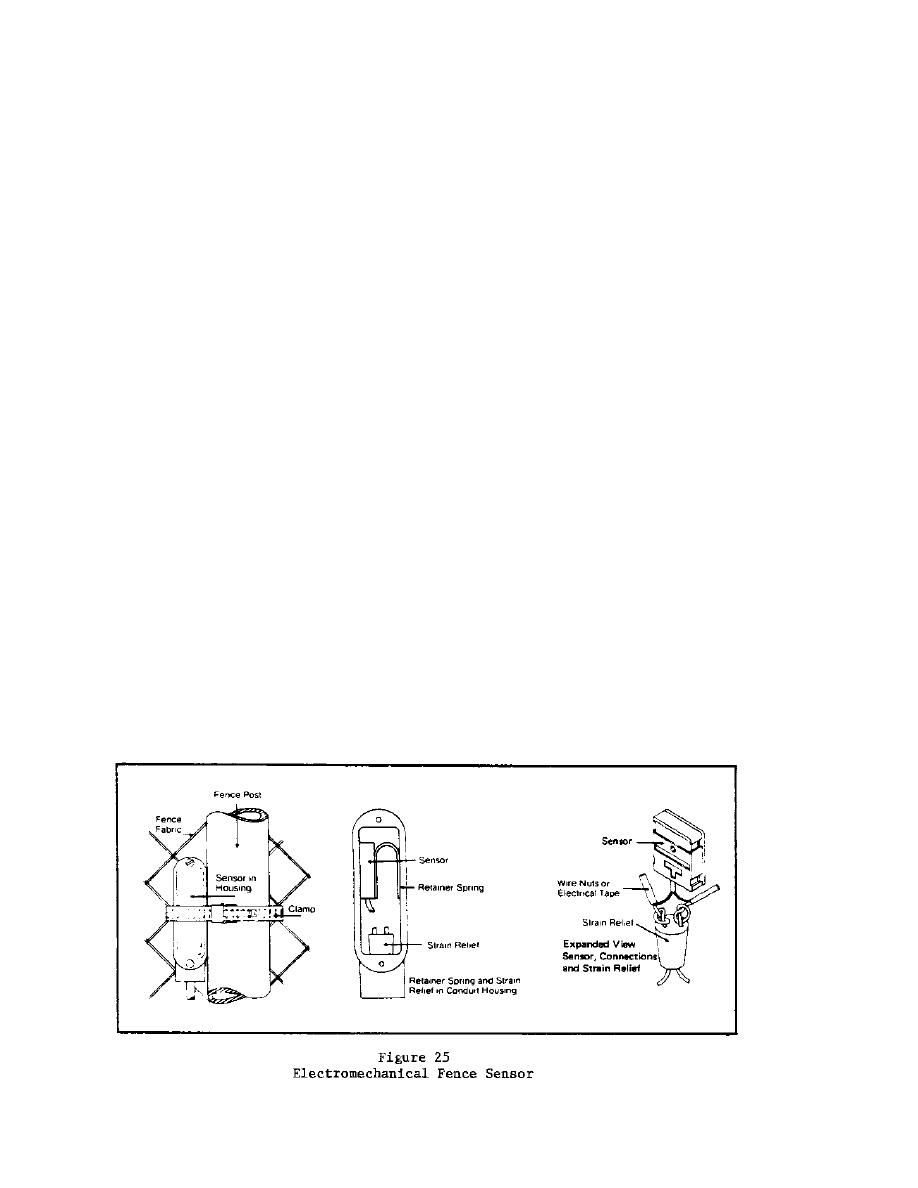

Custom Search
|
|

|
||
 mAn important consideration is the establishment of a clear zone around the
fence for alarm assessment. Since most fence sensors consist of
multisensing devices strung together at varying intervals, or one continuous
sensing device, the DoD has established a nominal standard of 100 meters
length for fence sensor alarm zone reporting and display. Fence corner
zones and gates normally have shorter lengths, but 100 meters is the normal
standard and most fence sensor electronics are configured to that length.
The paragraphs below discuss the presently available commercial fence
sensors as well as a short discussion of other barrier protection
applications. A key point to remember is that because fence sensors are
subject to intruder bypass and to the adverse effects of an outdoor
environment, they should never be the only type of sensor employed to
provide effective intrusion detection. Properly employed, fence sensors can
provide an important contribution to the overall effectiveness of an
integrated IDS.
4.3.1 Electromechanical Fence Sensors. This type of sensor is similar in
operation to the vibration or shock sensors used for building perimeter
penetration detection as discussed in paragraph titled
"Vibration/Ultrasonic" of this section. Normally each sensor is installed
on the fence posts at 10-foot intervals in a conduit housing. Figure 25
depicts such an installation. The sensors, which contain a simple switch
mechanism, are connected in series to form a sensor zone. The vibrations
associated with attempts to breach or climb the fence are detected by the
sensors which provide the switch closure or opening to tell the electronic
control unit for the sensor zone that an alarm has occurred. The control
unit generally senses (counts) switch closures over a preset time period
and, if the criteria is met, declares an alarm. Vibrations associated with
wind-induced fence vibrations can also be counted and, in the better quality
models, discriminated to minimize nuisance alarms to some degree. The more
advanced versions of this type of sensors use multiple masses within the
individual sensors, both of which must move to declare an alarm and which
also permit better sensitivity adjustment to reduce nuisance alarms. The
following considerations for application and installation apply to
mechanical fence sensors.
|
 |
|
 |
||